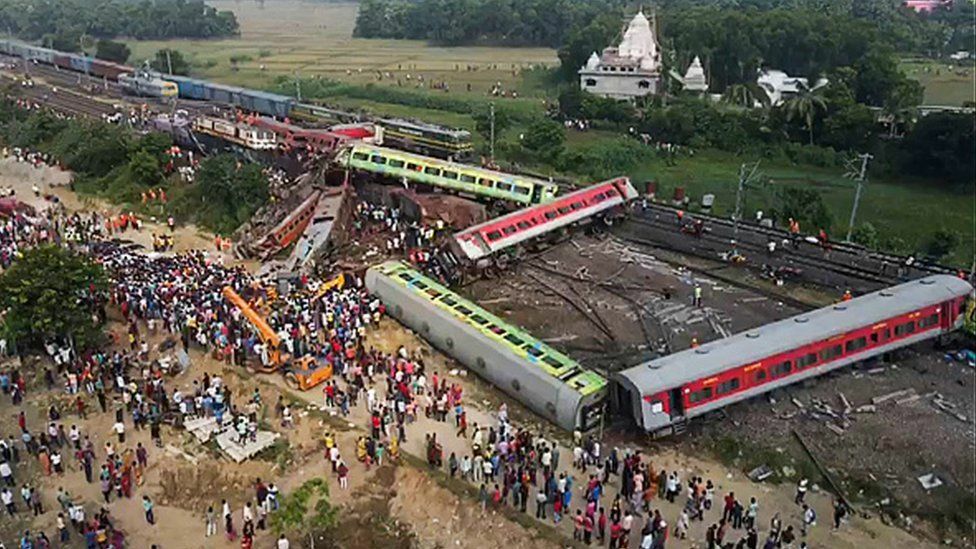Deadly India train collision raises fresh concerns over railway safety

A deadly train collision in India on Friday evening has left at least 261 people dead and 1,000 injured. The incident involved two high-speed passenger trains and a stationary freight train in the eastern state of Odisha. The cause of the accident is yet to be determined, but it has raised concerns about railway safety in the country.
India’s vast railway network, one of the largest in the world, carries over 25 million passengers annually across more than 100,000 kilometres of tracks. Railway Minister Ashwini Vaishnaw stated that 5,200 kilometres of new tracks were laid last year, and 8,000 kilometres are being upgraded annually. The majority of these upgrades are aimed at accommodating trains running at speeds of up to 100 kmph, with some sections being enhanced for speeds of up to 130 kmph and 160 kmph.
Despite these efforts, derailments remain a significant issue for the Indian railways. A 2019-20 government railway safety report revealed that derailments accounted for 70% of railway accidents, with train fires and collisions responsible for 14% and 8% of accidents, respectively. The report identified 40 derailments during the year, with 17 of those caused by track defects.
Regular maintenance is crucial for railway tracks, which are subject to expansion and contraction due to temperature fluctuations. India’s railways recommend that track recording cars evaluate the structural and geometrical integrity of tracks designed for speeds between 110 kmph and 130 kmph at least once every three months.
A federal audit report on derailments between April 2017 and March 2021 found some concerning results. While anti-collision devices have been discussed for Indian trains, they are currently only being installed on two major routes – between Delhi and Kolkata and between Delhi and Mumbai.
In 2010, over 150 people were killed in a train derailment and collision in West Bengal, caused by Maoist rebels sabotaging the track. Although there has been no indication of sabotage in Friday’s accident, the number of consequential rail accidents has risen in recent years. The Hindu newspaper reported that railway authorities were concerned about the increasing accidents and urged senior managers to analyse long working hours of crew members, particularly in the East Coast Railway and South East Central Railway zones. The site of Friday’s accident occurred within the East Coast Railway zone.
Latest Thailand News
Follow The Thaiger on Google News:


























